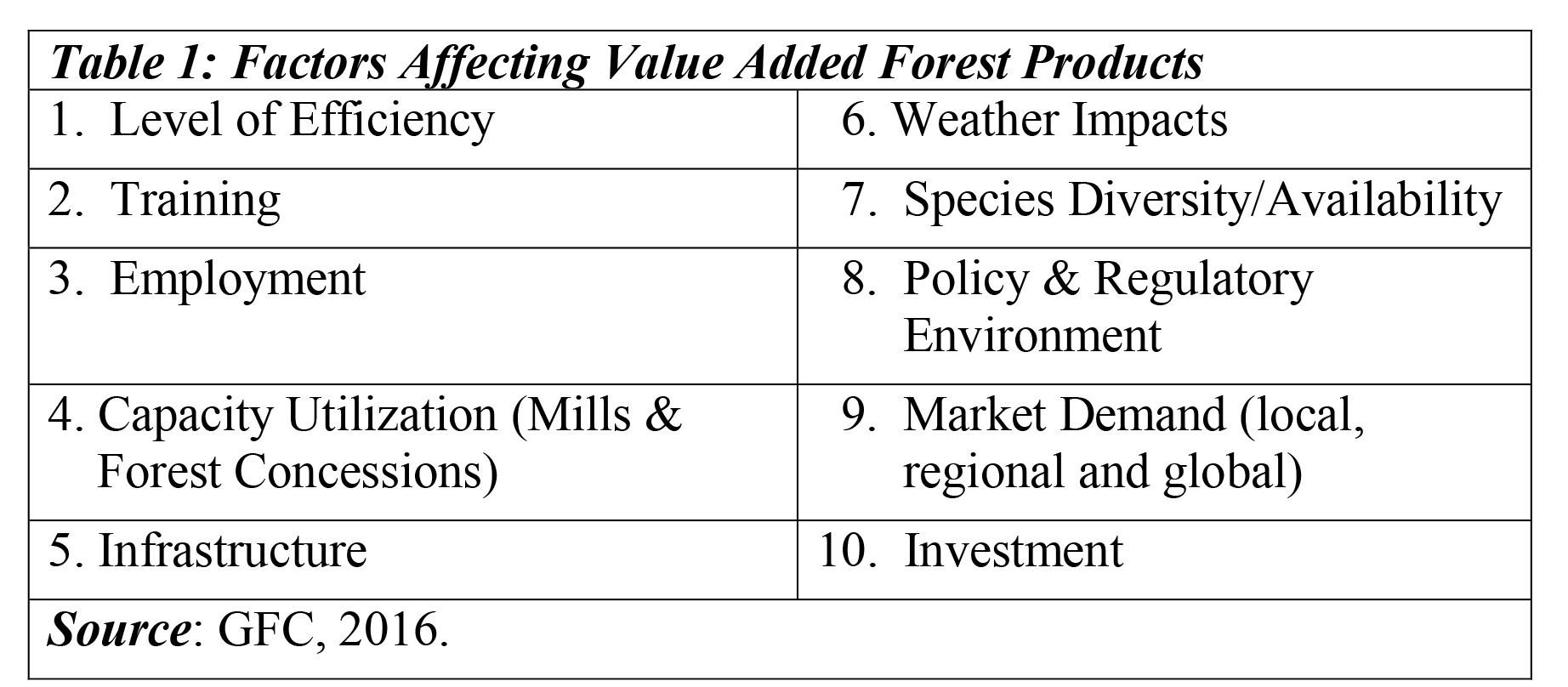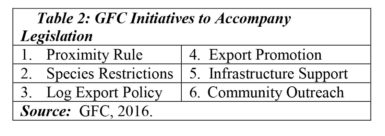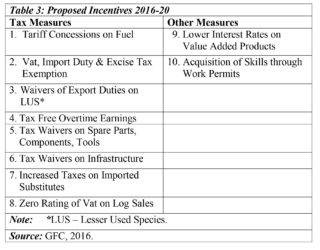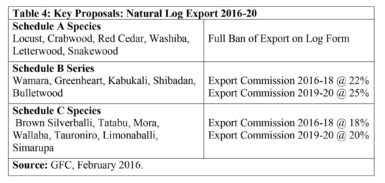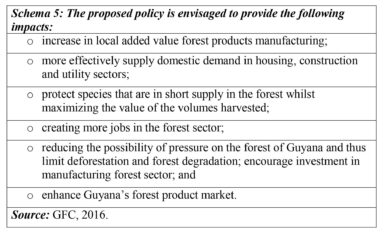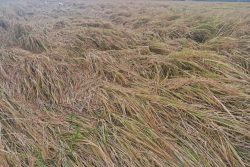Introduction
Today’s column concludes my discussion of Guyana’s extractive forest sub-sector. I shall return later to the issue of its governance, when I attempt a more general assessment of governance in Guyana’s extractive industries sector, as a whole. The focus of today’s attention is on the recently released (May 2016), Guyana: National Logging Export Policy, (NLEP), 2016-2020.
 Previous columns had pointed to several concerns arising from the underperformance of the extractive forest sub-sector. These include its low levels of forest conversion efficiency, as reflected in an overall conversion ratio of 40 per cent; its continued capacity underutilization, both of forest lands and milling capacity; its persistent lack of training and skills among the workforce; its poor investment rates, which have contributed to the prevalence of old and decrepit machinery and equipment; its unbalanced utilization of available plant species; and, the uncatered for impacts of weather events on its operations. Generally, these defects come together under a weak policy and regulatory framework for the sub-sector.
Previous columns had pointed to several concerns arising from the underperformance of the extractive forest sub-sector. These include its low levels of forest conversion efficiency, as reflected in an overall conversion ratio of 40 per cent; its continued capacity underutilization, both of forest lands and milling capacity; its persistent lack of training and skills among the workforce; its poor investment rates, which have contributed to the prevalence of old and decrepit machinery and equipment; its unbalanced utilization of available plant species; and, the uncatered for impacts of weather events on its operations. Generally, these defects come together under a weak policy and regulatory framework for the sub-sector.
All these weaknesses and indeed more are recognized in the NLEP. Table 1 highlights the factors the NLEP has identified as causing the weak, fluctuating, and declining performance of the sector.
Initiatives
Arising from this diagnosis, the NLEP has recognised that over the past decade “a number of policy decisions have been made … in support of reforms”. These include community development outreach in 2000; restrictions on species logged in 2001; the formulation of a log export policy in 2009; changes to the “proximity rule” for forest harvesting in 2011; export promotion; and infrastructure development. These are summarized in Table 2 for readers’ convenience.
Recommendations
The GFC has made eight specific recommendations for fiscal incentives in the NLEP and three “Other” proposals. The proposed tax measures range from on the one hand, import tariff concessions on fuel, along with VAT and excise duty exemption for the forest sector’s equipment and machinery; to, on the other hand, tax free overtime earnings for workers in the sector, along with taxing imported substitutes for local forest products. The “Other” measures include “work permits” for the short term entry of overseas based skilled workers. Table 3 identifies these proposed incentives, which are designed to accompany recent legislative changes.
I have attempted in Table 4 to put the essential recommendations of the NLEP in a basic schema for the convenience of readers. This shows that for Schedule A species of forest products (the list is given in the table), a full ban has been recommended for the export of these species in log form. All exports should therefore entail value added products only.
For Schedule B species (the list is also given in the table) between now and up to the end of 2018 an export duty of 22 per cent is placed on logs exported in these species. From 2019, and up to the end of 2020, this export duty increases to 25 per cent. For the Schedule C species (the list is also given in the table), the export duty/commission starts at 18 per cent for 2016–2018 and increases to 20 per cent between 2019 and 2020.
Clearly the aims of these measures are to: 1) encourage value added in the forest sector’s output as a whole; 2) discourage the export of “overexploited” species; 3) encourage the development of lesser produced species, even if, initially in log form; 4) help ensure that the “highest value species” are predominantly used for value added products; and 5) secure a smooth transition to the more effective production structure and process the Plan envisages.
Conclusion
There is no better way to describe the aims of the NLEP than that provided by the document itself. This conclusion therefore literally restates the NLEP’s final paragraph:
The proposed policy reforms for Guyana’s log export point in the right direction. Going forward, however, these proposals should be strategized in terms of the expected roles of the forest sub-sector as an integral part of the broader extractive industries sector and planning for log exports situated in the context of Guyana’s long-term development.
